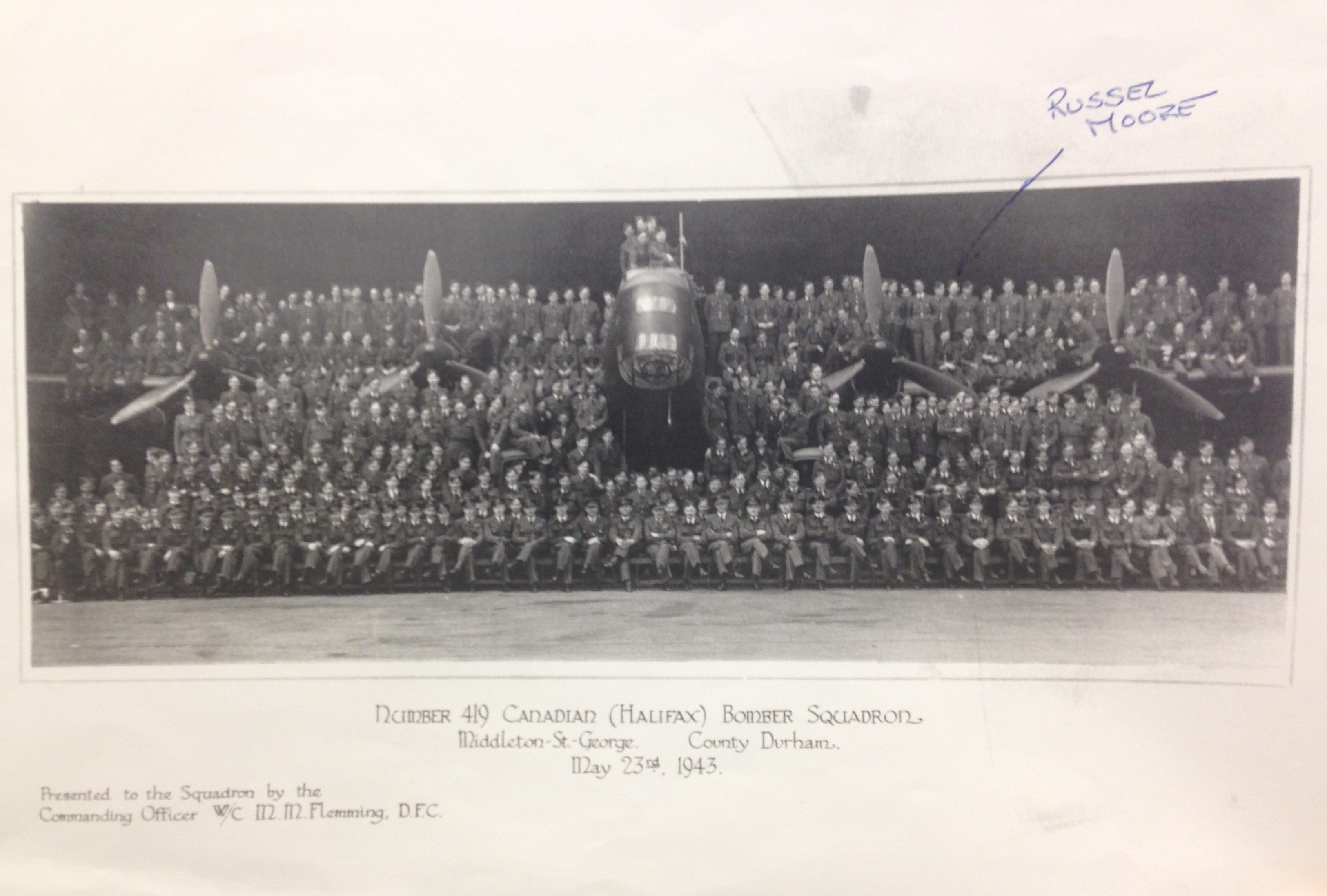FROM: Calgary, AB.
DATE OF ENLISTMENT: October 10, 1941
SERVICE NUMBER: R131942, J87164
MANNING DEPOT: #3 Edmonton
MEDALS AND DECORATIONS: Aircrew Europe
I graduated from No. 9 Service Flying Training School in Centralia, ON. March 11, 1943, as a Sergeant Pilot. Before graduating, I was told I would be posted to Ironprior for instructor training. As most of my friends were going overseas, I requested to join them. Most of those I know of that went overseas went as Sergeants, while most that remained in Canada were commissioned. I was in Bornemouth on May 24, 1943 when several FW 190 strafed the park and dropped bombs on the metropole and Bobby’s Dept. Store, resulting in several deaths. Pre-air flight training at Antsy was very enjoyable, seeing England looking like a patch work quilt with its small fields. Then went to Shawbury for advance flying and beam approach training on Oxford aircraft. A pleasant experience. By now had about 276 hours of flying. By August 15, 1943 I commenced flying at an operations training unit when I met some of my crew. Navigator Sgt. John Fletcher and I had met at manning depot and went to ITS together. He was a wonderful pianist, around who many gathered to sing many war songs. On September 1, we set out on our war load trip and navigation exercise to bomb a sunken ship in the Hull Estuary. P/O Sutherland DFC came along as navigation instructor for Fletcher and as he entered he came to me and said, “I have finished a full tour without a scratch, I want to come home the same way.” He must have had a premonition, because we had set course under the cloud base at 900ft and at about 3000ft we lost the port motor with hydraulic failure. The propeller would not feather, so we were losing altitude and had to abandon the trip. As it was a war load, I decided to dump most of the fuel. But being over England I could not dump the bombs, one being live. We broke cloud and then looked for an airfield. Some were being upgraded for American aircraft to use, thus we found runways littered with gravel and equipment. We finally chose Desborough and landed on the grass wheels up and on our belly. No one was hurt.
Crew: Sgt. John Fletcher, Navigator, P/O Frank Houston Bomb Aimer, F/Sgt. Donald Mc Devitt, Wireless Operator, and Art Beckett, Rear Gunner.














